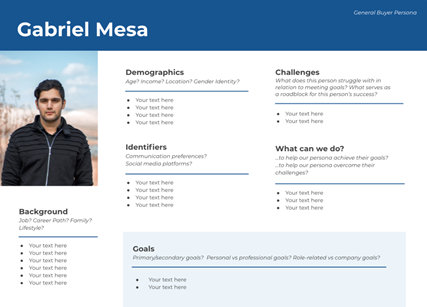
Is one of your most challenging hurdles attracting enough of the right advertiser clients to your publication?
Real customers have problems they want to solve. If you want to be the best in your business, you must learn how to solve specific, urgent problems people have – and do it better than the competition.
Why is it important to solve problems for your customers? What problem, specifically, is your business custom-designed to solve? What is your process for helping customers address their pain points head-on and solve their problems with your products or services?
Today, we’re addressing these questions by walking you through how to establish outstanding solutions to relevant problems your target audience is facing. Let’s dive right in.
Quick Takeaways
- Your publication should make your ideal customer’s life better by adding real value.
- Start by identifying your unique value proposition – a brief statement that describes the value you offer, who you offer it to, and why your offer stands out.
- To identify which problem your business should focus on solving, consider the most significant pain points your target audience already has and cares about solving.
- To solve real problems your audience faces, build a strategy that addresses top customer pain points and implement it effectively.
Why is Problem Solving So Important?
Your publication should make your ideal client’s life better in some way. That involves providing value. This isn’t about focusing on your own business or how you can promote your brand and services. Instead, it’s about solving specific people’s problems and standing out by telling people why your company, product, or service is better than the competition’s.
The first half of becoming a successful publisher involves identifying what problem you want to solve for whom. Start by identifying your unique value proposition (UVP) if you haven’t already. It should be a brief statement that describes the value you offer, who you offer it to, and why your solution is unique.

Source: CoSchedule
Here are some examples of UVPs:
- Uber: “The smartest way to get around.”
- Slack: “Be more productive at work with less effort.”
- Spotify: “Listening is everything.”
- LessAccounting: “Bookkeeping, without the hassle.”
To devise your UVP, follow these essential steps:
- Identify who you’re targeting.
- Define what makes your brand different from other brands offering similar products or services.
- Gain a deep understanding of your audience’s pain points – and how your brand can solve them.
- Integrate your business’s core values into your UVP.
What Problems Should Your Publishing House Solve?
While there may be hundreds of potential problems your company could choose to solve, you need to narrow down the list to perfect-fit solutions for your target audience. Here’s how you can determine which problems are worth your time and effort.
Identify Problems Your Target Audience Already Knows They Have
If someone doesn’t know they have a problem, they won’t try to fix it. Identifying the issues your target audience already knows about will help streamline the process of marketing and connecting with them.
Identifying relevant, solvable problems will require researching your target market. Build a buyer persona or two to reflect your ideal customer. A buyer persona is a fictional representation of a real customer that should include demographics, pain points, goals, challenges, and other helpful insights.

Source: HubSpot
Once you’ve created your buyer personas, you can tailor your messaging, product development, and services to effectively meet your audience’s needs.
Identify Problems Your Target Audience Cares About
What’s troubling your ideal customer the most? What problems are your customers motivated to solve? As a publisher, top pain points for your customers may include increasing readership, standing out from other authors, and staying up to speed with reading and consumption habits.
Identifying these problems your audience cares about will make it easier to grab their attention and convince them you have the solution they seek. If you can prove that you have the perfect product or service for someone, they’ll be much more likely to become a customer.
How to Solve the Problems Your Audience is Facing
Follow these steps to solve specific problems for your target audience.
Step #1: Identify the Top Pain Points
Pain points are often related to productivity, finances, support, or internal processes. For publishing, they may revolve around delivering content and telling stories in the most effective ways possible. Here are some tips to help you identify real, relevant, and urgent pain points of your target consumers:
- Send surveys to current customers. The answers should provide you with data you can act on immediately. Keep them simple, and include open-ended questions for authentic feedback. Consider focusing on topics regarding readership, demographics, print versus digital, and consumption preferences.
- Talk to your sales team. Your sales team may have the most experience working directly with customers and addressing common pain points. They may also offer insight into what your brand does well, where it needs improvement, and why leads do or don’t become customers.
- Study your competitors. Maybe another publisher is currently addressing client problems more effectively than you are. What tone of voice do they use when engaging with people? What marketing channels and types of messaging do they use? What does their website have that yours lacks?
- Read online reviews and forums. Online reviews and panels often contain the pros and cons of products and services. Just ensure the reviews and comments you study are legitimate so you don’t follow a rabbit trail based on false data. Use a variety of marketplaces for collecting reviews, and tie reviews to purchases so you know they’re trustworthy.
- Engage with customers on social media. You can learn a lot by engaging in group and one-on-one conversations and identifying questions people often ask about the problems you can help solve.
Step #2: Build a Strategy
Next, analyze the top problem (or problems) you’ve identified and build a strategy to solve it.
Step #3: Offer the Perfect Solution
You may need to identify various solutions before pinpointing the best one. Test your strategies, and don’t be afraid to make adjustments as you go to improve continually.
Ignite Growth in Your Publishing Business
We can help you grow your business with new ideas that meet your customers’ most pressing needs. BOOM Communications Group offers business consulting and strategy, advertising and marketing, and publication and niche printing services.
We consider ourselves Opportunity Creators for small and medium-sized businesses, and we’d love to partner with you. Reach out to us to learn more about our services and how we can help your business flourish.
Contact us today.
